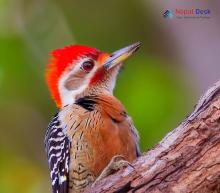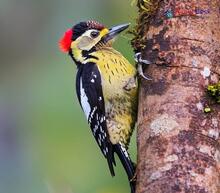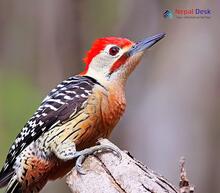Nestled within the breathtaking landscapes and lush greenery of Nepal lies a treasure trove of remarkable biodiversity. Among the diverse species of fauna in this South Asian country, the Dendrocopos genus of birds represents an intriguing facet of its rich avian life. Let us delves into the fascinating world of Dendrocopos woodpeckers that inhabit the forests of Nepal, highlighting their unique characteristics and significance in the country's ecosystem.
An Introduction to Dendrocopos
The Dendrocopos is a genus of birds belonging to the woodpecker family Picidae. These striking birds are remarkable for their vibrant plumage, sturdy beaks, and distinct drumming sounds that resonate through the forest. As members of the woodpecker family, they play a crucial role in promoting forest health by controlling insect populations and providing nesting sites for other bird species.
Diversity within the Genus
Several fascinating species make up this captivating genus, each with its unique traits that set them apart from one another. Among the most notable species found in Nepal are:
The Fulvous-breasted Woodpecker (Dendrocopos macei)
Recognizable by its black-and-white barred appearance and buff-tinged underparts, this medium-sized bird resides mainly in lower elevations and tropical or subtropical environments.
The Lesser Yellownape (Dendrocopos celebensis)
This eye-catching bird showcases lemon-yellow napes against a predominantly dark green body, creating a striking contrast. It thrives in mixed forests across various altitudes.
The Gray-headed Woodpecker (Dendrocopos canicapillus)
Exhibiting gray and white colors across its head and body, this species can be found at higher elevations and in temperate forests within Nepal.
The Deeper Significance of Dendrocopos in Nepal
Aside from their unique beauty and captivating behaviors, the presence of Dendrocopos species also holds ecological importance in Nepalese forests. As industrious foragers, Dendrocopos woodpeckers help maintain ecological balance by reducing harmful insect populations. Consequently, these birds contribute substantially to the overall well-being of their habitats.
Moreover, their excavations of tree trunks create nesting cavities sought after by other bird species. This contribution to the avian community in Nepal fosters a thriving ecosystem characterized by biodiversity and flourishing habitats.
In Conclusion
The Dendrocopos genus of birds serves as a prime example of the unique and captivating fauna that can be found within Nepal's forests. Their diverse appearances, intriguing behaviors, and vital role in maintaining ecological balance render them indispensable to their habitats. As we continue to explore and learn about these fascinating creatures, we gain a deeper appreciation for the intricate tapestry of life in Nepal's vibrant natural landscapes, reaffirming the need for robust conservation efforts to preserve this irreplaceable biodiversity.




